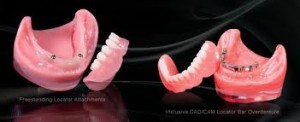Sometimes you may hear the term ‘biopsy’ when investigations are required for certain lesions in the mouth. Biopsy sounds like a scary procedure that brings the word ‘cancer’ to mind but in fact it is just an aid for diagnostic purposes. Continue reading
Consent – Dental Protection Part 11
Aspects of consent
The General Dental Council is involved in various matters of consent, as ethical issues which reflect upon the professional conduct of a dentist. The General Dental Council identifies the main ethical principles of getting consent as:
- Informed consent
- Voluntary decision making
- Ability. Continue reading
Consent – Dental Protection Part 10
A patient sometimes consents to a particular line of treatment because of the apparent advantages or benefits as described by the dentist. Care should be taken to ensure that the information given is balanced and accurate, and that any claims (as to likely success) can be substantiated. Statements such as “your crown will last for lifeâ€, or “your molar root treatment will be 100% successful†or “I guarantee you will have no problem†may dramatically weaken the value and validity of the consent contained. Continue reading
Consent – Dental Protection Part 9
Evidence base
Some clinicians believe that patients must be provided with every last detail of the evidence base, in order to enable them to assess the information objectively and to compare alternative treatment options. Not only is this another onerous prospect for the clinician, it also fails to recognise two important aspects of the consent process. Continue reading
What is an Overdenture for Teeth?
Advanced periodontal or gum disease usually cause loose or painful teeth. If many of your teeth have become loose or painful, it may be too late for to save them. In such a situation, removing some of your teeth and replacing them with an overdenture may be the best way to avoid infection and restore function and health to your mouth. Continue reading
Consent – Dental protection Part 8
Material risks
In an Australian case (Rogers v. Whitaker), the High Court of Australia ruled that a 1 in 14,000 risk of blindness associated with a procedure, should have been disclosed to a patient. In this example, the patient was already almost blind in one eye and the doctor should have warned of the possible risk of blindness to the other eye no matter how slight in these circumstances, regardless of whether the patient had expressly asked the question or not. Continue reading
Consent – Dental Protection Part 7
Avoid restricting the person’s rights
- See if there are other options that may be less restrictive of the person’s rights.
- Weigh up all of these factors to work out what is in the person’s best interests. Continue reading
Consent – Dental Protection Part 6
Assessing lack of capacity
An individual’s capacity must be assessed specifically in terms of their capacity to make a particular decision at the time it needs to be made.
This means that a person may lack capacity to make a decision about one issue but not about others. Care must be taken not to judge an individual’s capacity merely by reference to their age, appearance or medical condition. Continue reading
Consent – Dental Protection Part 5
Children
Most children eventually reach an age where they can grasp relevant facts about their body and about proposed treatment to it. They can give consent to treatment, but the degree of understanding can vary in relation to the complexity of the treatment envisaged. A few children are never, even when adulthood is reached, capable of properly understanding the information given to them and must therefore be considered incapable of giving consent. Continue reading
Consent – Dental Protection Part 4
Competence
In order both to understand the information provided, and to give the necessary authority for consent, a patient must be competent. “Competence†in this context means the patient’s ability to understand the explanations given, about:
- The nature and purpose of a particular procedure;
- Its likely effects and risks; and
- Any alternative treatment and how these alternatives might compare. Continue reading

